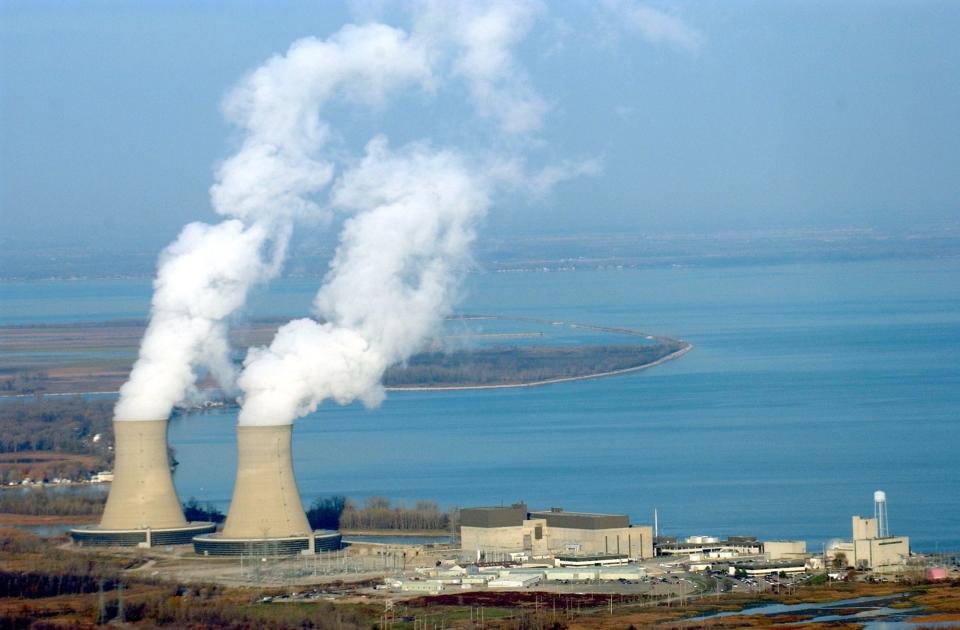Tom Adamich: Michigan's energy future is bright
As communities across Michigan work to understand opportunities to support electric vehicles and low/no emissions goals, an overview of the current landscape of energy production and usage in Michigan might be a great place to start. A valuable resource for current information is the U.S. Energy Information Administration – a unit of the U.S. Department of Energy.
Begun as a part of the Department of Energy Organization Act of 1977 which established EIA as the primary federal government authority on energy statistics and analysis, the EIA collects, analyzes and shares information to be used for policy making and energy information purposes. The structure of the EIA builds upon systems and organizations first established in 1974 following the oil market disruptions that took place in 1973 as part of the Arab oil embargo and U.S. gasoline shortages of the time period.
Fuel types followed by the EIA include coal, petroleum, natural gas, electric, renewable fuels (solar and wind), and nuclear energy.
Michigan is No. 1 in natural gas storage capacity
According to recent EIA figures for Michigan (2022), Michigan leads the nation with almost 1.1 trillion cubic feet of underground natural gas storage capacity, more than any other state and almost one-eighth of the nation's gas storage capacity. Its public and municipal utilities also use natural gas for 33.1% of net electricity generation.
With regard to other fuel types, Michigan utilities use coal to produce 25% of all electricity. 24.5% of Michigan’s electricity is produced by nuclear power. Nearly 15.6% of Michigan’s electricity is generated by renewables, including wind and solar power.

Michiganders also use natural gas for 74.8% of home heating, followed by electricity at 11.8%. Propane heats 8.7% of Michigan homes, and renewables provide 3.7% of home heating in the state. This places Michigan among the top five states in residential sector petroleum use and ranks it first in residential sector consumption of propane.
Michigan’s current renewable energy profile
As mentioned earlier, Michigan’s renewable footprint provides almost 16% of Michigan's electricity net generation in 2022, and wind energy accounted for three-fifths of that power. Michigan ranks among the top 15 states in the amount of electricity generated by wind energy. It also is a leader in hydroelectric power generation; its largest hydroelectric facility is the Ludington pumped-storage plant on the shores of Lake Michigan on the Lower Peninsula. Generating more than 2,000 megawatts of capacity, it is one of the 10 largest pumped storage power plants in the world!
Michigan ranks 11th in U.S. petroleum consumption
According to its EIA profile, Michigan ranks 11th among the states in total petroleum consumption. Four-fifths of the state's petroleum use is in the transportation sector, and motor gasoline accounts for almost 75% of that total. Michigan has 3,586 gas stations, and of that total, 288 sell clean-burning E85 ethanol. Clean air regulations require eight southeastern Michigan counties regulate the vapor pressure of motor gasoline sold during the summer.
As mentioned earlier, Michigan ranks high in its use of propane for home heating – nearly 1 in 10 Michigan households heat with petroleum products, and nearly 90% of those homes use propane – a hydrocarbon gas liquid (HGL).
What does the future hold?
I’ve shared Michigan’s current energy profile to give a sense of what energy in Michigan looks like today. Remember, EVs run on electricity, so any efforts to reduce overall carbon emissions using them must also factor in the carbon emissions of the fuel generating the electricity used to charge them. Coal and natural gas still produce over 58% of Michigan’s electricity. Also, while the use of renewables is increasing, it is still a small percentage of overall energy production and consumption. Nuclear is another sum-zero carbon fuel whose power generation use may expand in the future. Nitrogen is another emerging fuel source for passenger vehicles still developing a market
Finally, discussions of low carbon emissions fuels like compressed natural gas (CNG) and biodiesel – the latter in pure 100% biodiesel (B100) form are 74% lower than those from petroleum diesel – are emerging and may be popular choices for fleets and other high-volume customers.
Michigan’s energy future is bright and offers many opportunities for the future.
Tom Adamich is president of Visiting Librarian Service, a firm he has operated since 1993. He also is project archivist for the Greening Nursery Co. and Family Archives and the electric vehicle awareness coordinator at Monroe County Community College.
This article originally appeared on The Monroe News: Tom Adamich: Michigan's energy future is bright

